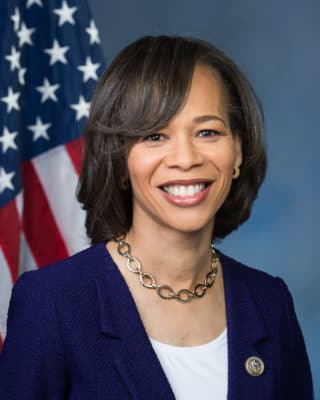It’s projected that people of color will become the majority of the U.S. population between 2040 and 2050. As we talk about positioning them for the Future of Work, we must first look critically at the present state of affairs.
Black unemployment has remained twice as high as white unemployment ever since the Bureau of Labor Statistics began collecting data in 1972. And we know that among those who are employed, a sizable income gap exists. Black women and men make 62 cents and 87 cents on the dollar, respectively, compared to white men.
Just by closing these gaps, PolicyLink research shows that every region of the country would be made financially stronger. Plus the American economy could gain $2.1 trillion in gross domestic product every year. This suggests there is a national and perhaps global case for ensuring equity for Black and brown professionals in the Future of Work. And it begs the question: Who is responsible for pulling the levers to bring equity to fruition?
“It’s not simple, but folks need to be in the same room. There needs to be a public-private effort to discuss, what can we do? And it’s also a business opportunity for entrepreneurs to try to figure this out,” said Harin Contractor, former economic policy advisor to the Secretary of Labor and current subject matter expert at Nexight Group.
Economists consider the racial wealth gap a public policy failure, but a confluence of events in 2020 has led Corporate America and Big Tech to assess their shortcomings as well. What started as uprisings nationwide against police brutality has trickled down into measured examinations of diversity across institutions. Disenfranchised employees have become vocal in the press about their experiences, and companies have responded by issuing public statements that promise a renewed commitment to a more inclusive workforce.
There is a sense of rising momentum and awareness, but it will stall if not distilled and translated into policies that innovate toward a more equitable workforce. As we continue our series, we include the perspectives of various entities with the power to establish plans of action that can ensure no one is left behind in the Future of Work.
Passing the Buck: Whose Job Is it to Reskill Workers?
As the former workforce policy director at the Joint Center for Political and Economic Studies, Harin Contractor co-authored the 2019 report “Racial Differences on the Future of Work: A Survey of the American Workforce.” Among many findings that could present a road map for policymakers, the survey found that Black, Latino, and Asian-American respondents believe the federal government—not individual companies—bears the greatest responsibility to help the workforce prepare for a changing economy. Contractor says it can start by providing race-based data to measure the effectiveness of training programs that do exist.
“I went through a hundred different training program evaluations; only six may have shown outcomes by race,” he explained. “So if you’re talking about spending all this money on training folks, which we don’t do well compared to other countries, should we know whether they work or not, particularly for black workers? Especially if the folks designing the training are white folks—how are they going to be able to understand what works for Black folks?”
NOVA Workforce Board in Sunnyvale, California, is an example of a federally funded agency that offers training programs to bridge the skills gap. Its program manager, Luther Jackson, says NOVA typically serves 5,000 job seekers a year between San Jose and San Francisco, but he admits that tracking the success of their programs isn’t easy. In addition to having privacy issues around data, it’s also difficult to measure what other factors may have led to a person’s outcome after they’ve gone through the program.
“One of the factors we look at is hiring within a certain amount of time after we see them. So after they leave us, are they employed?” Jackson said. “We get that information from state records, but the accuracy of it isn’t great. It’s very hard to keep track. And then you get some confidentiality issues too, but it’s something we’re trying to address.”
Jackson says NOVA is about to make a significant investment in measuring organizational effectiveness. But it’s just one of 500 national agencies in the federal workforce system funded by the Department of Labor. If you imagine them all having various degrees of data reporting, you could see how the feedback loop that could inform policy might be porous.
Given NOVA’s proximity to Silicon Valley, the displaced workers Jackson interfaces with have a unique profile: Nearly 80 percent of them tend to have bachelor’s degrees. This means that without intervention, even highly educated tech professionals are in danger of losing their place in the Future of Work. “We’ll have people with master’s degrees, Ph.D.s who get laid off because technology changes and they can’t get back in,” Jackson said.
The role workforce boards play in reskilling these workers on a regional level is vital because as Contractor points out, private corporations are no longer making the investment to train new employees. He says on-the-job training has diminished severely over the last three decades.
“Back in the day, they would spend the first two or three months training you on the job they want you to do, and then you do that job. Now they want you to have that skill on day one,” he said. “So they keep talking about this notion of a skills gap, which doesn’t exist with the data because they’re shirking their responsibility onto others.”
For Black workers, having support is nearly as important as having skills. Jackson emphasized that the strength of our networks unlocks pathways to employment and boosts retention. And Contractor, who served in the Obama Administration for over three years working on economic analysis for key initiatives, advocates for a national program to stand up more mentorship and tutoring.
“The reason the Obama Administration focused so much on mentorship and Obama moved onto doing the My Brother’s Keeper Initiative was because it was based on research showing that mentorship, tutoring, and wraparound support was one of the few things we know from economic data that shows economic mobility, particularly for African-Americans. And so can we do more of that?” he said.
Lawmakers Feel a Sense of Urgency to Innovate
When it comes to Capitol Hill, the policies that stand a greater chance for success are often those that gain consensus on both sides of the aisle. Encouraging progress is being made on this front as it relates to diversity in the Future of Work. On Jan. 15 of this year, a bipartisan group of about 20 lawmakers announced the establishment of the Congressional Future of Work Caucus, led by Reps. Lisa Blunt Rochester (D-Del.) and Bryan Steil (R-Wis.).

“As far as our goals for the caucus, we want to develop a clearinghouse of legislation relating the Future of Work in Congress, get continued participation and education of our members on the various aspects of the Future of Work, and finally, produce a national strategy that includes legislative wins for our country,” Blunt Rochester said at the time of the launch.
According to Blunt Rochester, the Caucus’s priorities have been accelerated due to realities brought to light by the coronavirus.
“Artificial intelligence, machine learning, the necessity for broadband in our society—COVID-19 brought to fruition all the things we talked about for decades. Distance learning—we’ve been talking about that for a long time. That’s not new, but it made it a reality. Telework—it made it a reality. So it’s had us not just talk about the issues, but actually be forced to really do something about the issues,” she recently said.
It’s widely reported that the congresswoman has Joe Biden’s ear as he chooses his running mate. The Democratic presidential nominee represented Delaware in the Senate for three decades, and Blunt Rochester is the former Delaware Secretary of Labor. She says she has impressed upon Biden that the Future of Work is a high priority and presents an opportunity to reimagine how America could look moving forward.
But in so many words, if the Future of Work is a priority for Congress, then spending has to reflect that. The people on the ground doing the work, like Jackson at NOVA Workforce Board, are already strapped and worried about their continued ability to provide services.
“Our funding has been cut constantly, and one of our concerns is that with federal and state deficits being so high in the future, we’re concerned about our longer-term funding,” he said. “These questions that we’re talking about, economic questions, the equity questions, the health questions, these are huge questions that need huge funding. And you can’t do this on the cheap.”
Indeed, an issue so layered requires all hands on deck, and the responsibility must be shared among coalitions of stakeholders with the resources and motivation to facilitate change.
“There’s philanthropy, private sector, public sector money; all three together create the ecosphere,” Contractor advised.
The Future of Work depends on promoting equity through policy, and policymakers being held accountable to drive results. If not, a country divided could find itself in the near future grappling with the consequences of leaving an entire population behind.
SPONSOR SERIES
This story is made possible with the support of New Profit—a venture philanthropy firm deeply investing in workforce solutions powered by forward-thinking entrepreneurs helping people level up their tech skills and secure opportunities in the new world of work.
New Profit recently announced a $6M initiative to help fund entrepreneurs helping to rapidly-reskill American workers for the future of work. Join the challenge!








